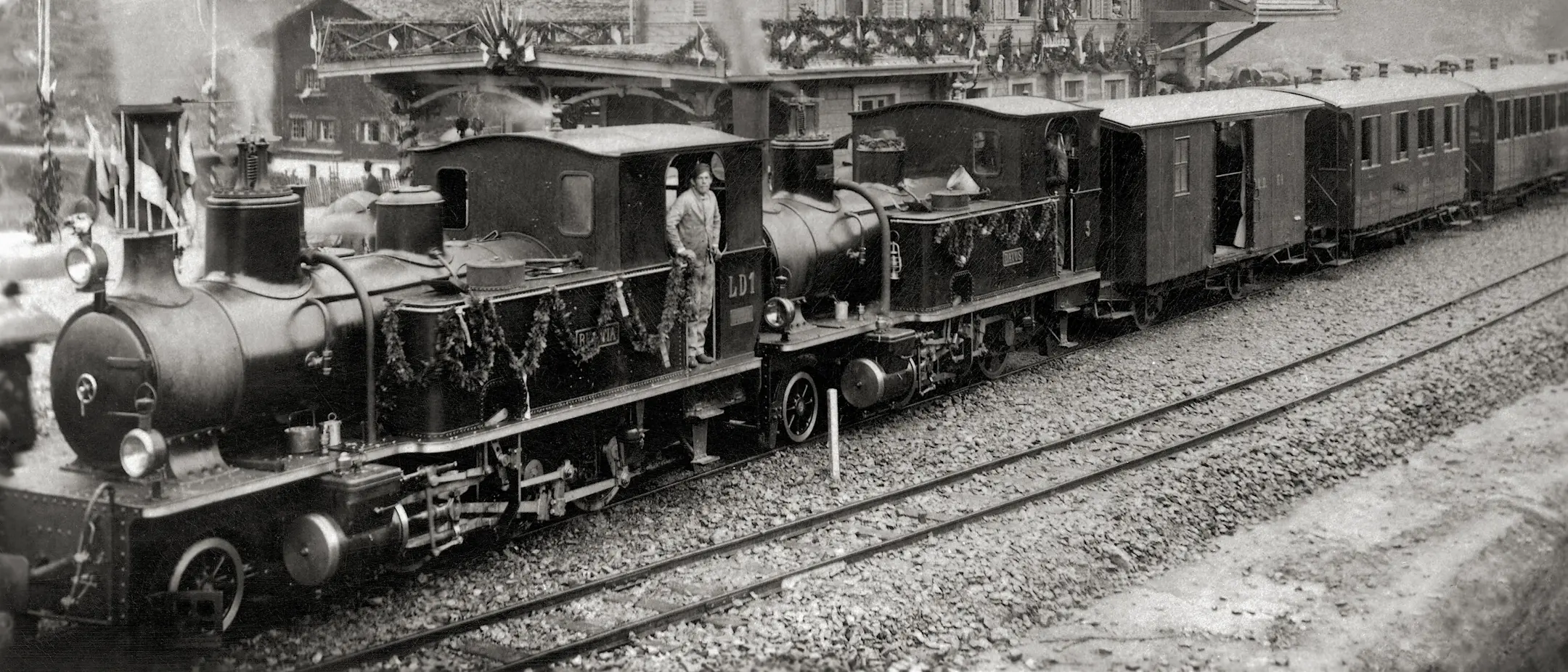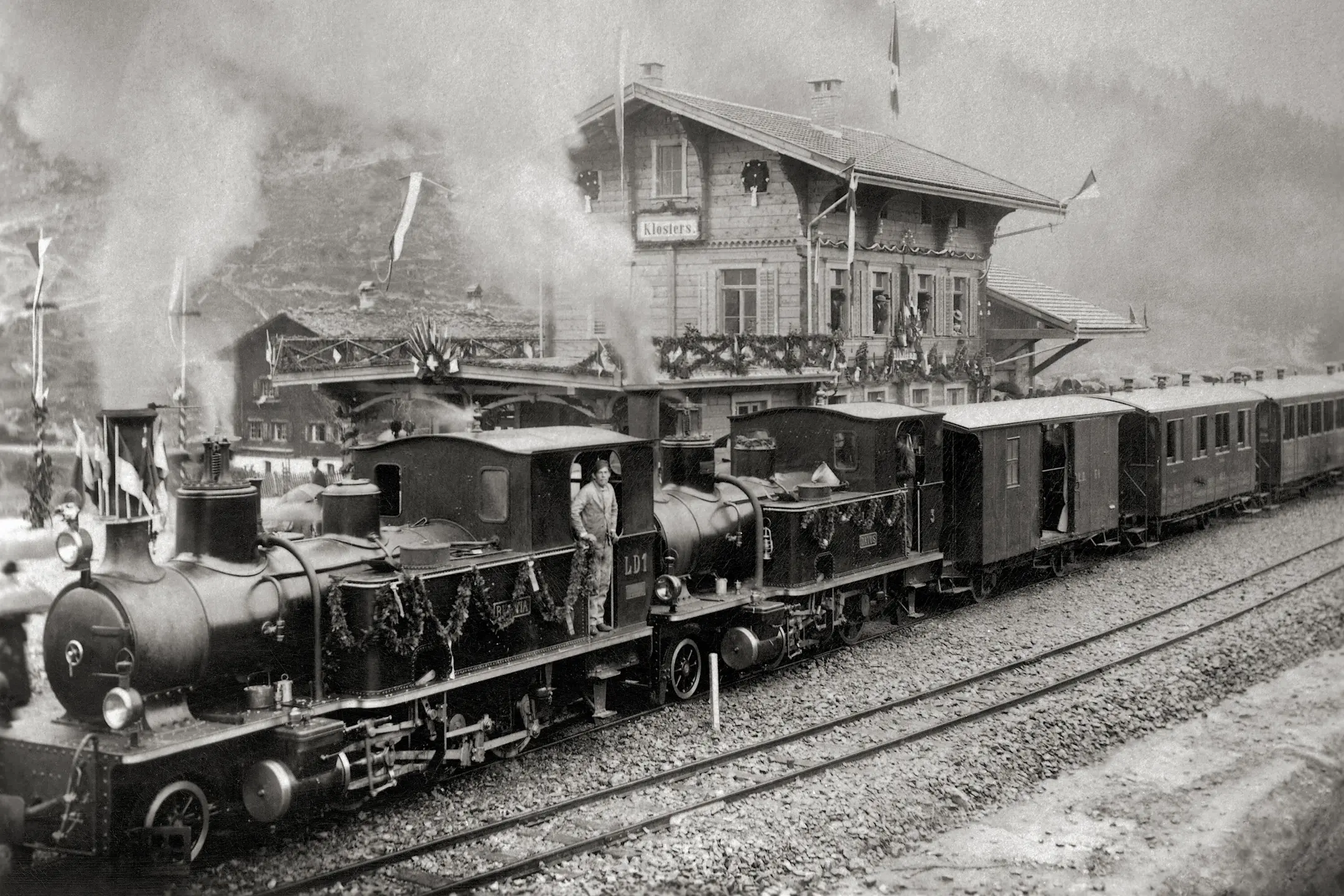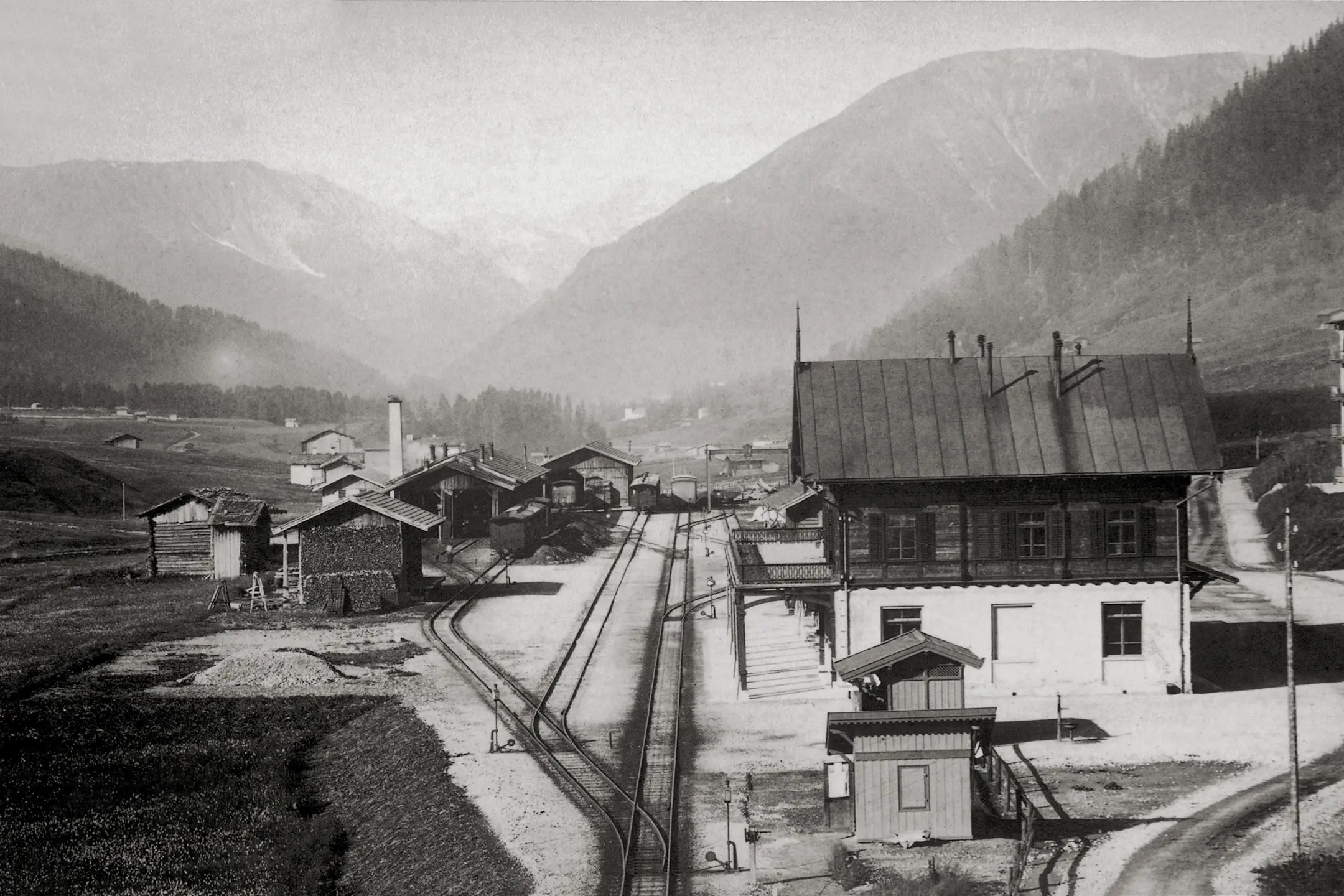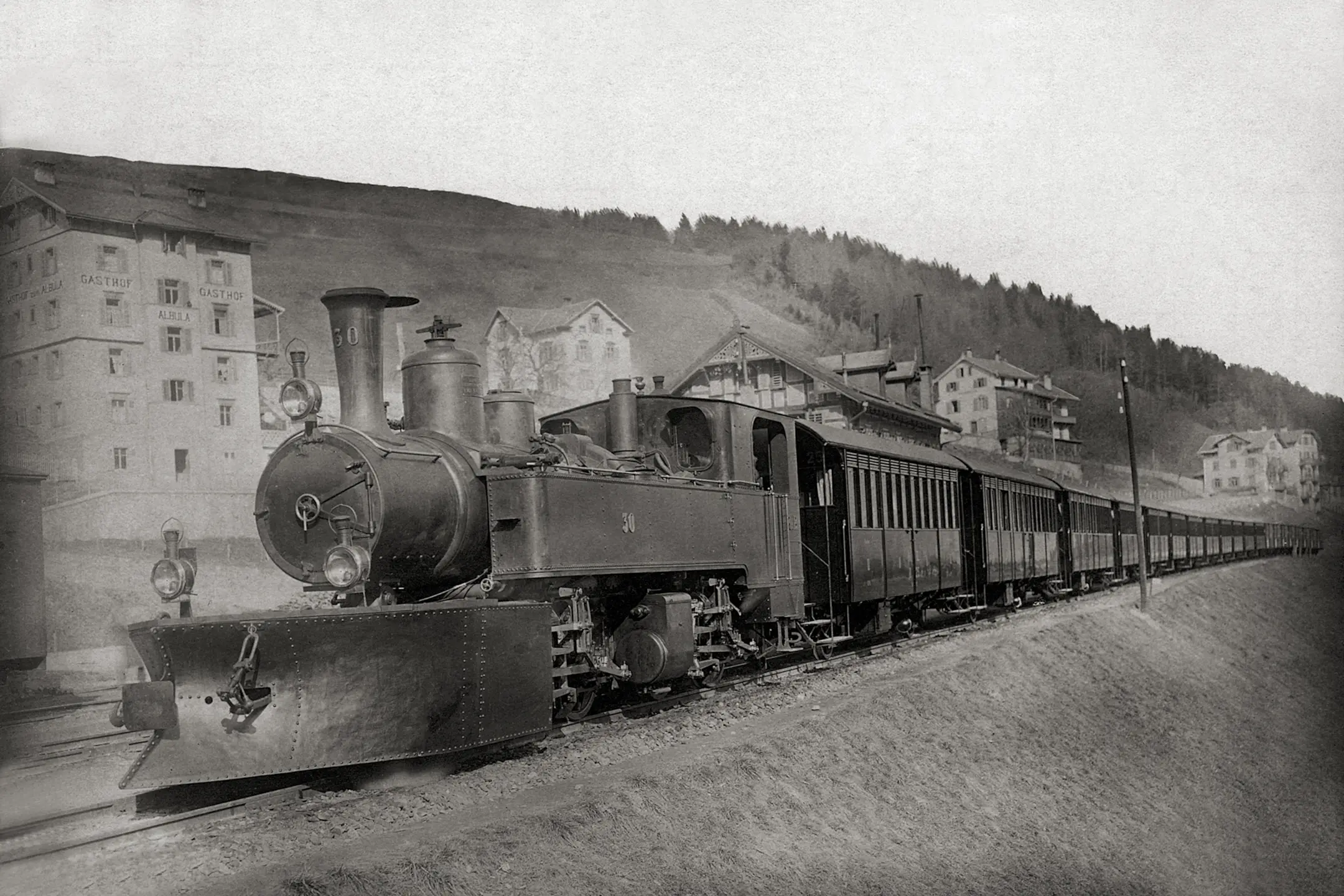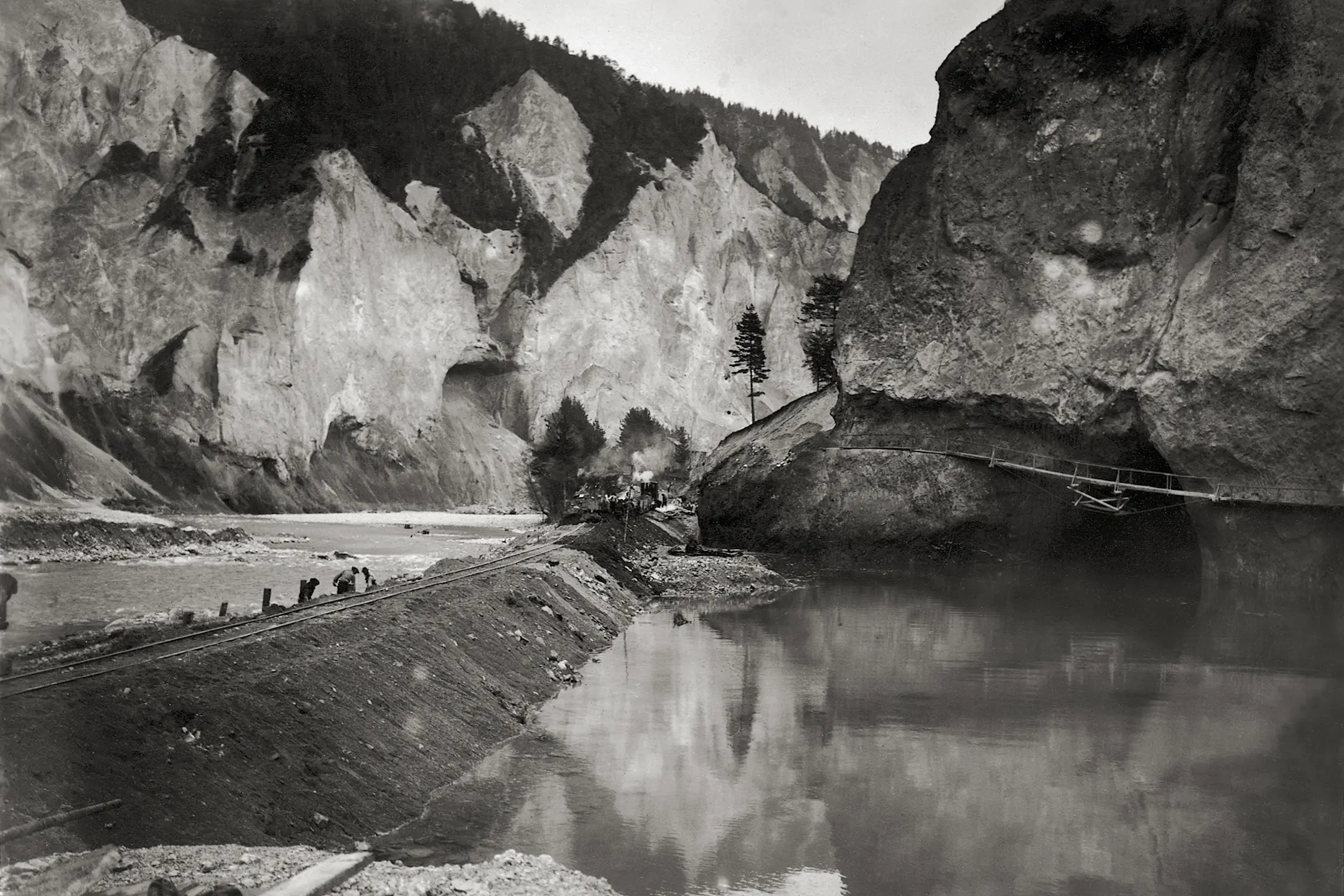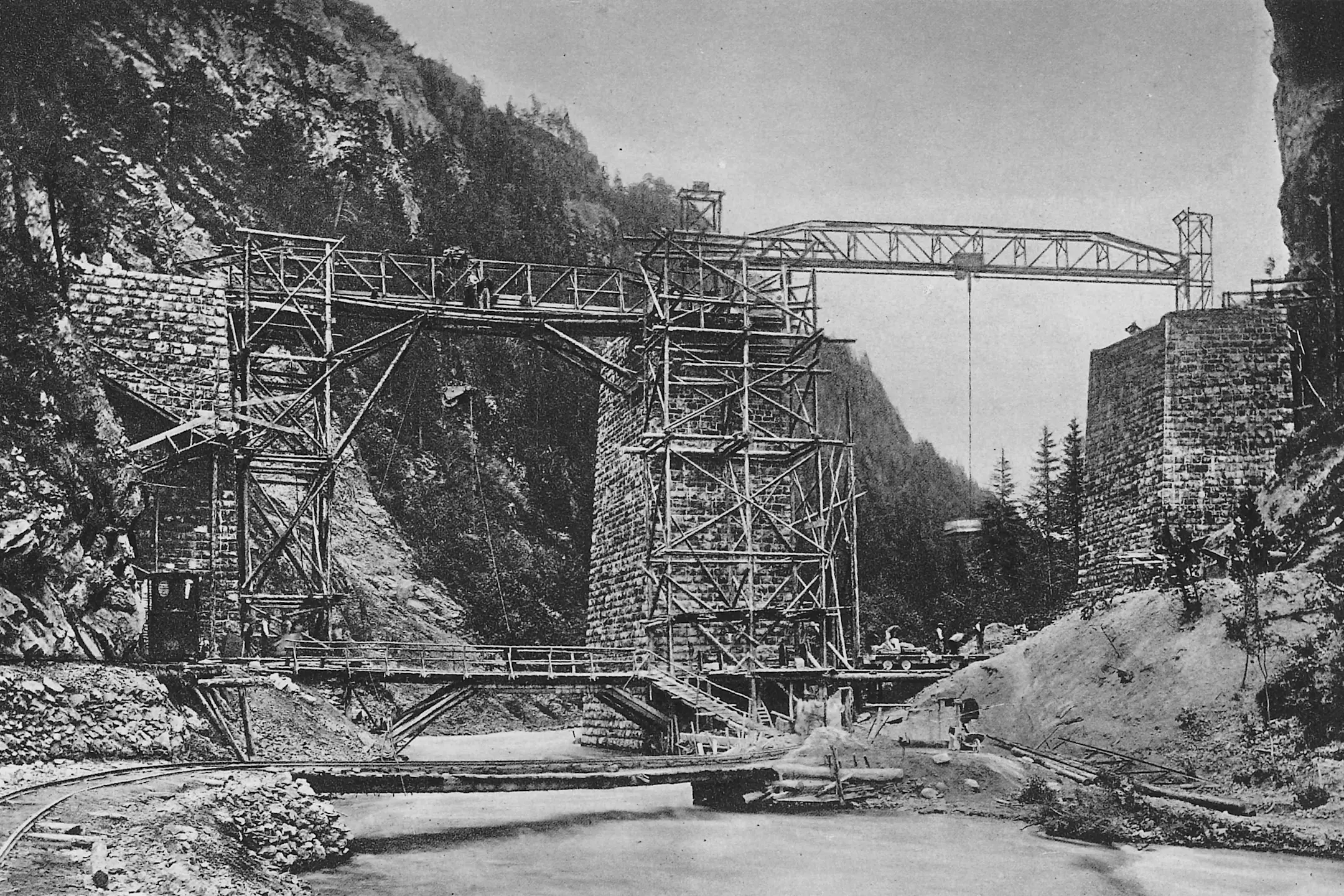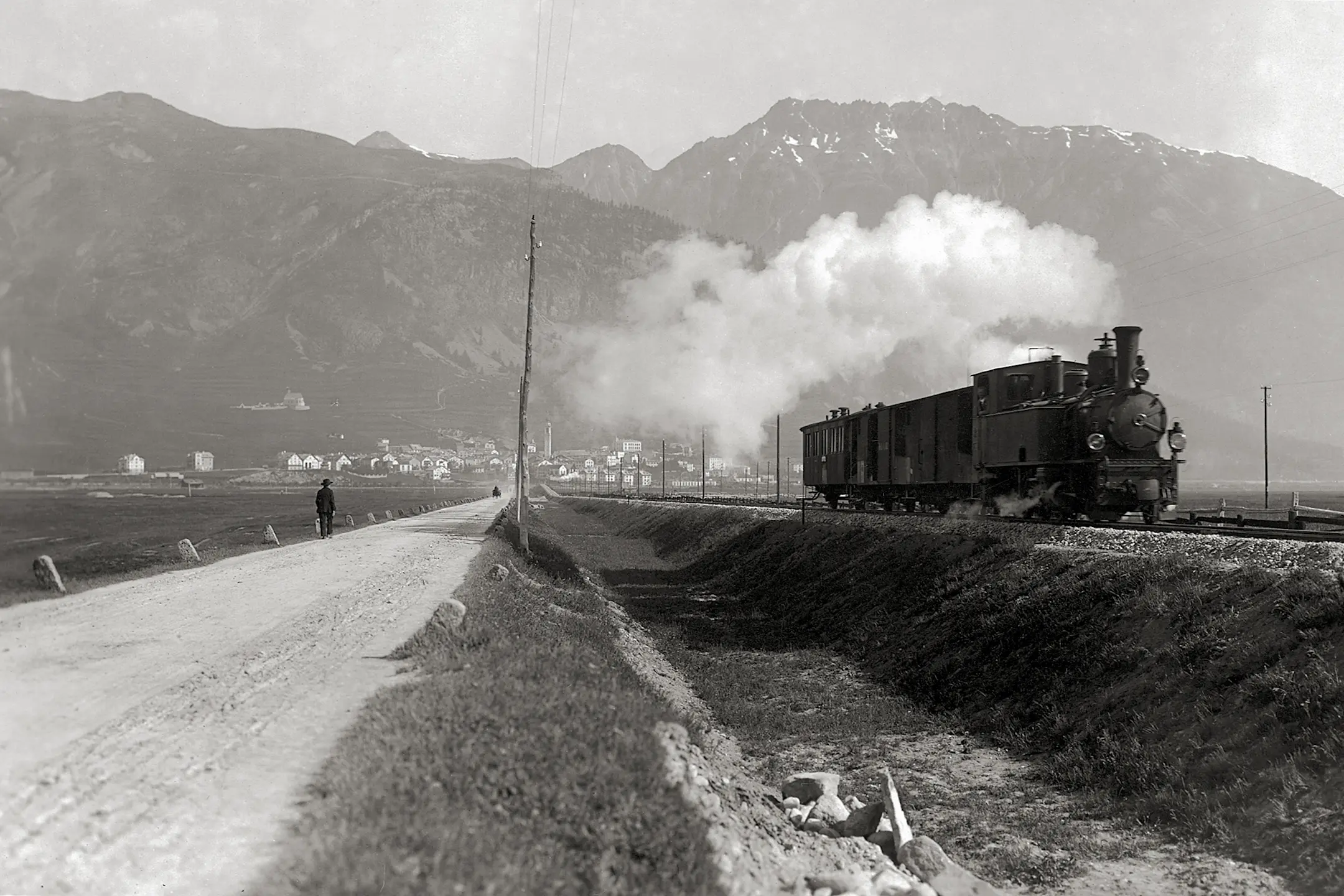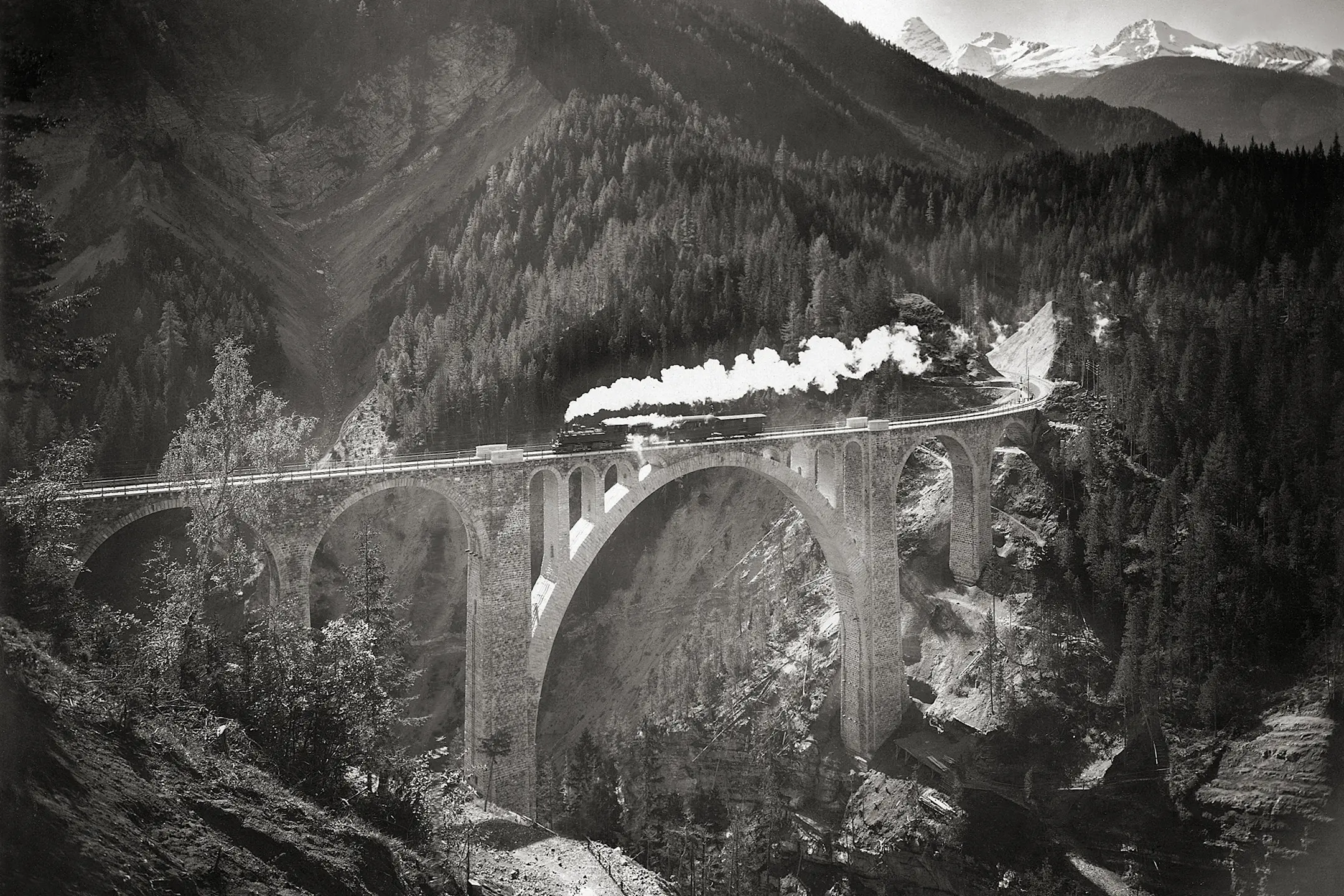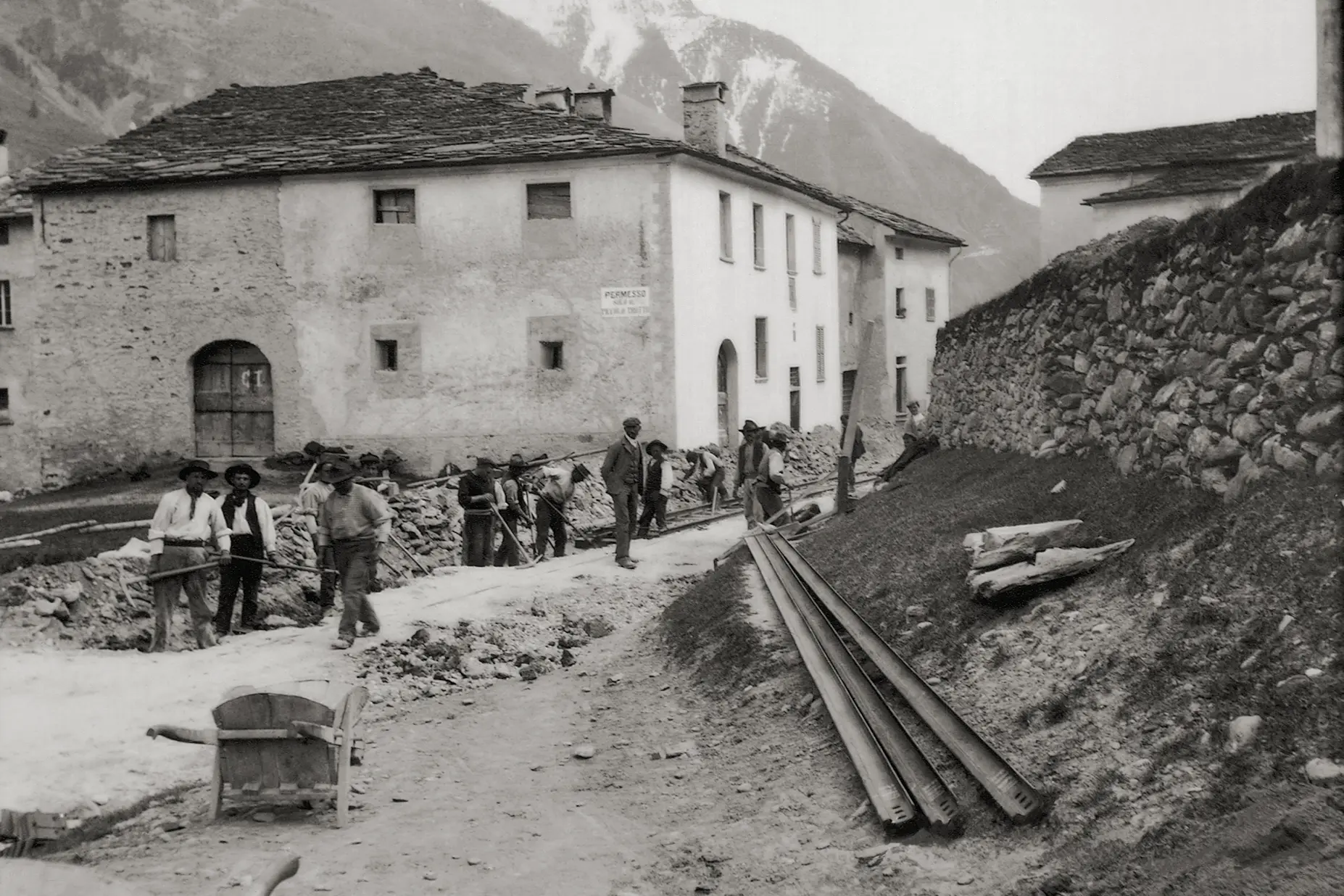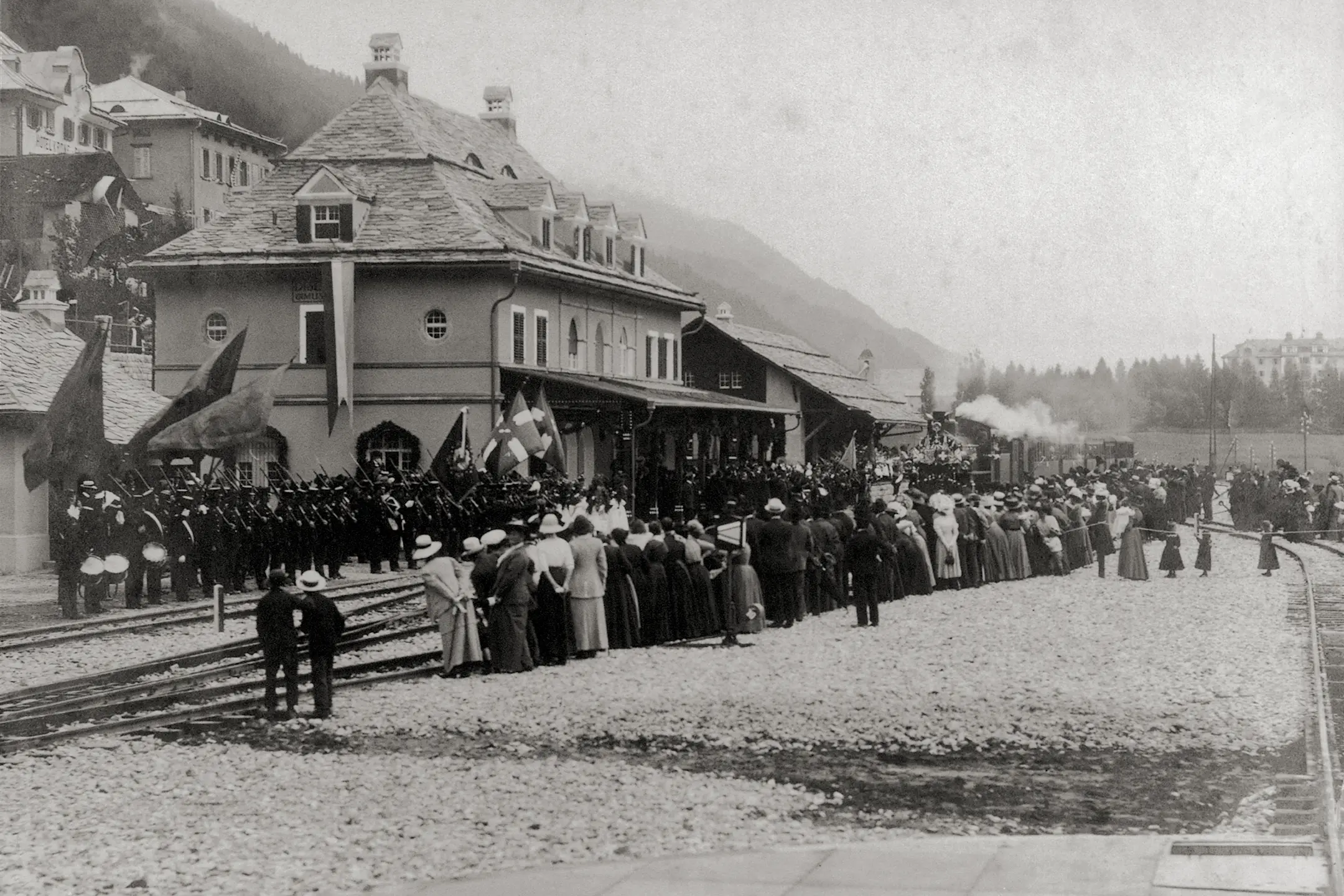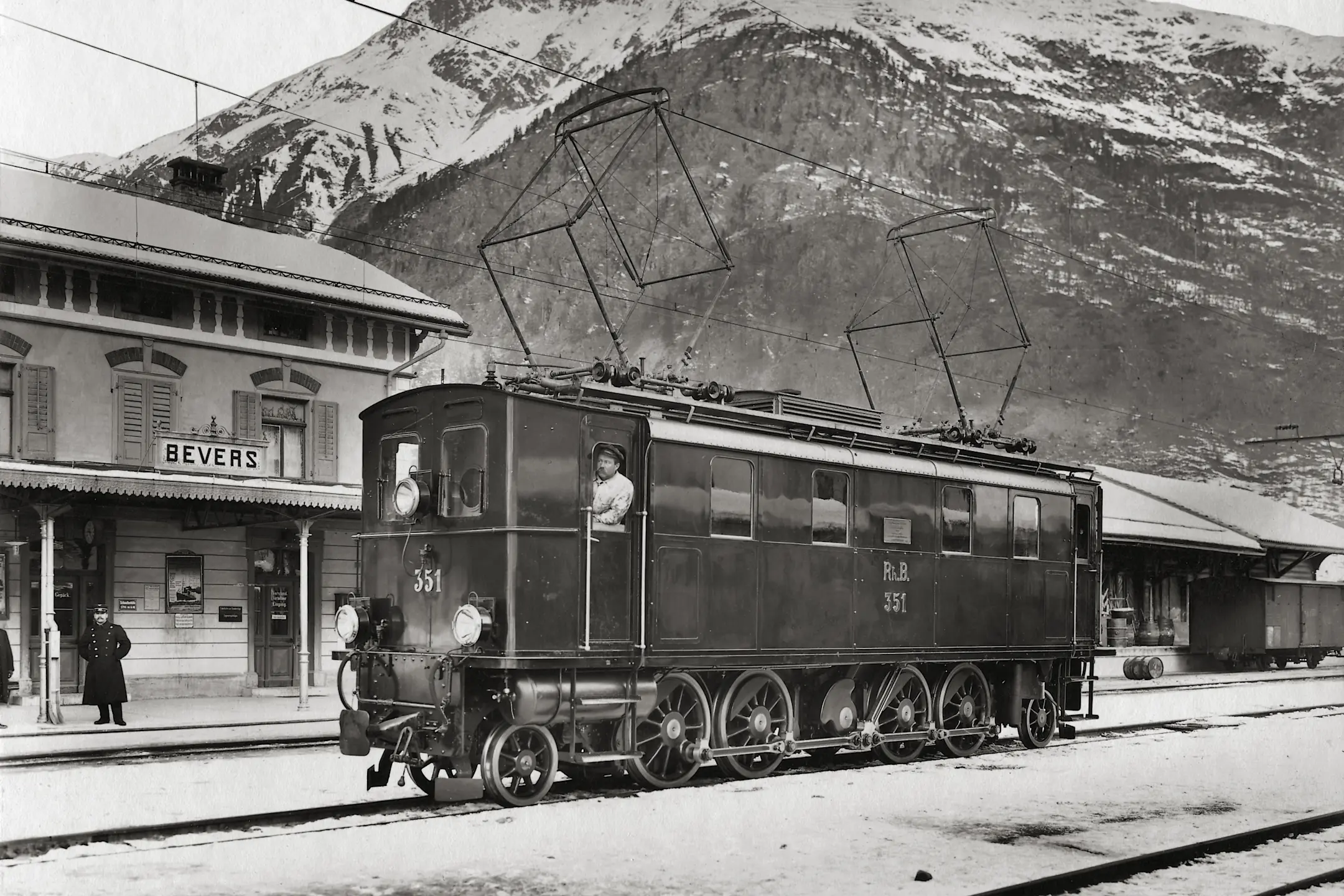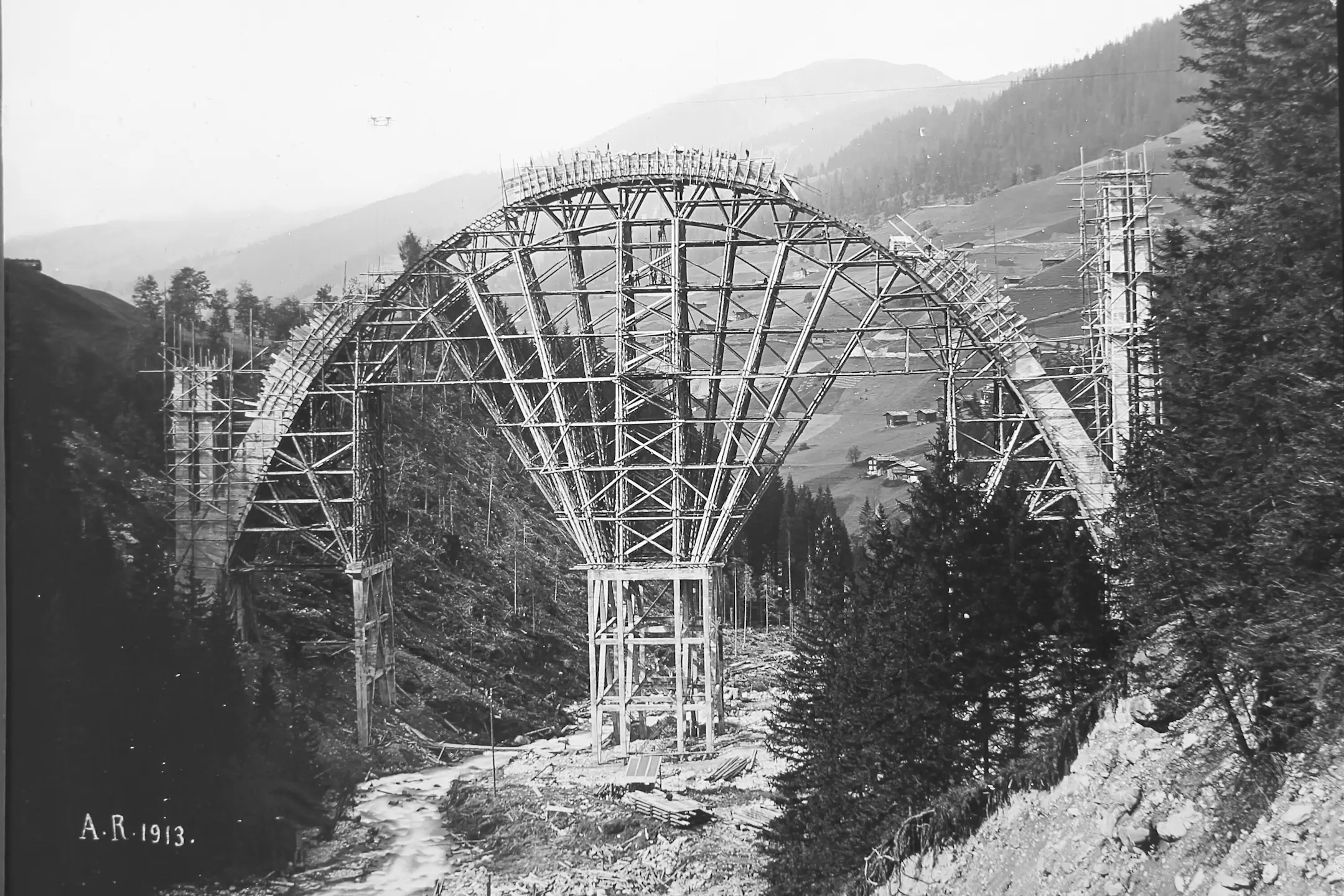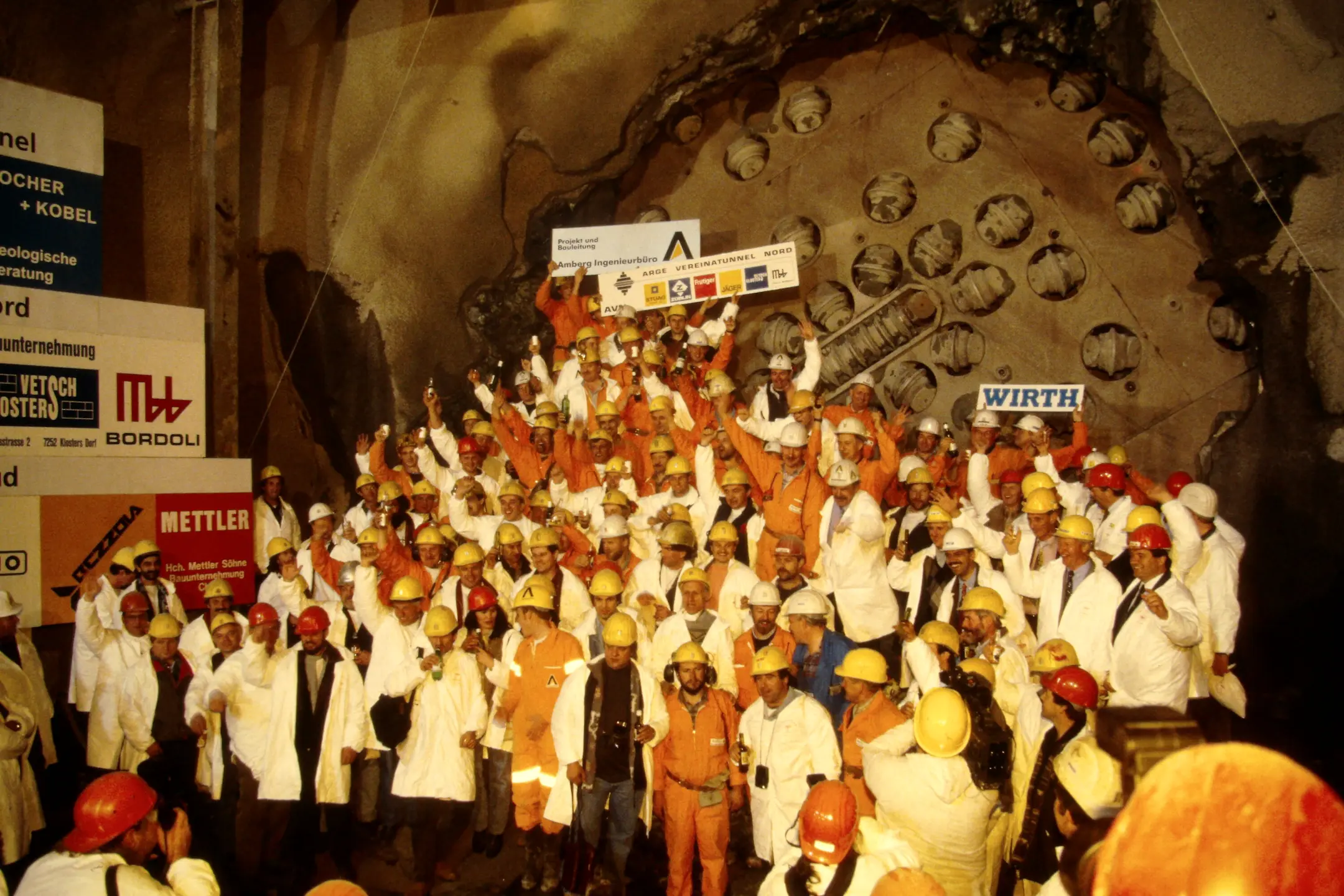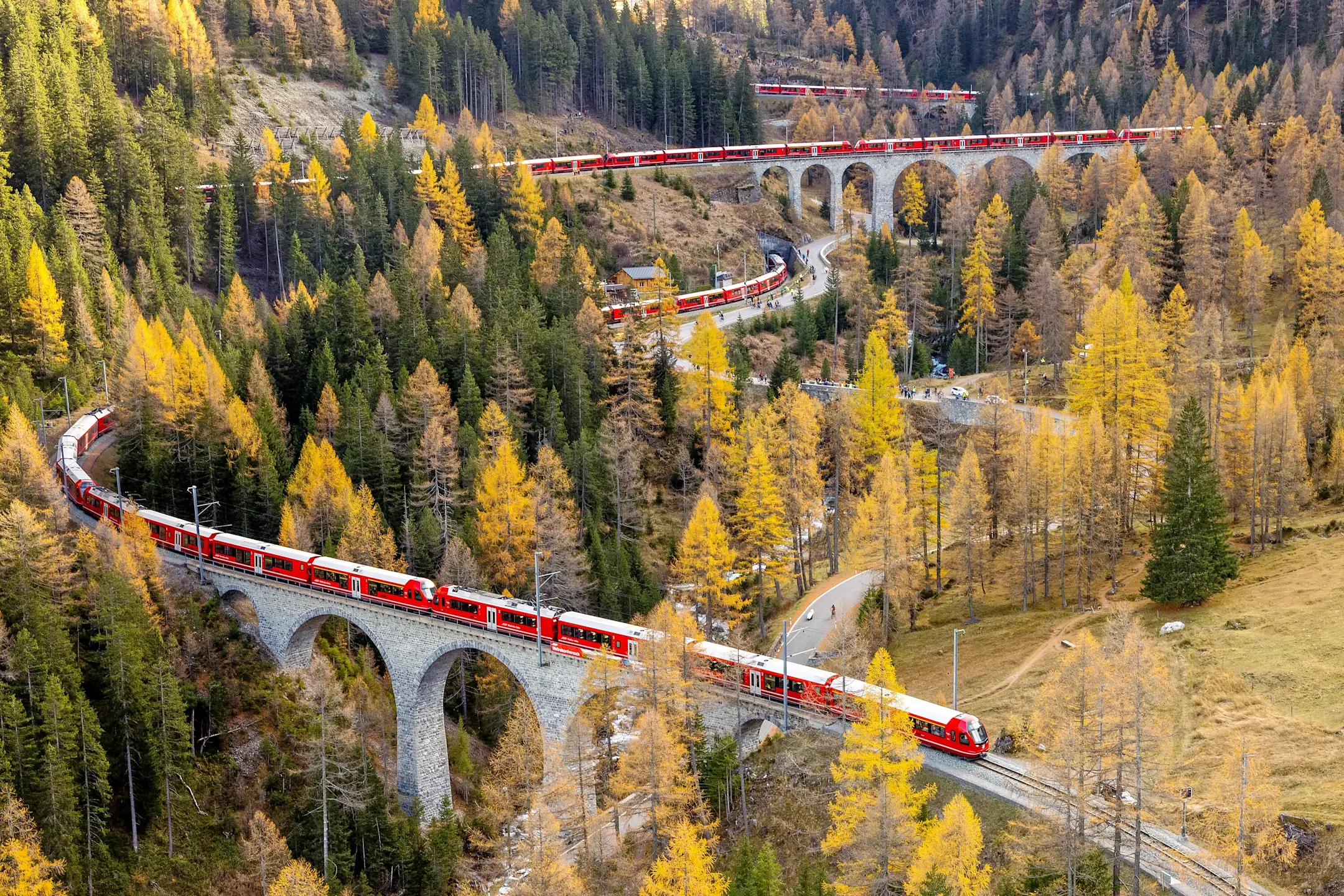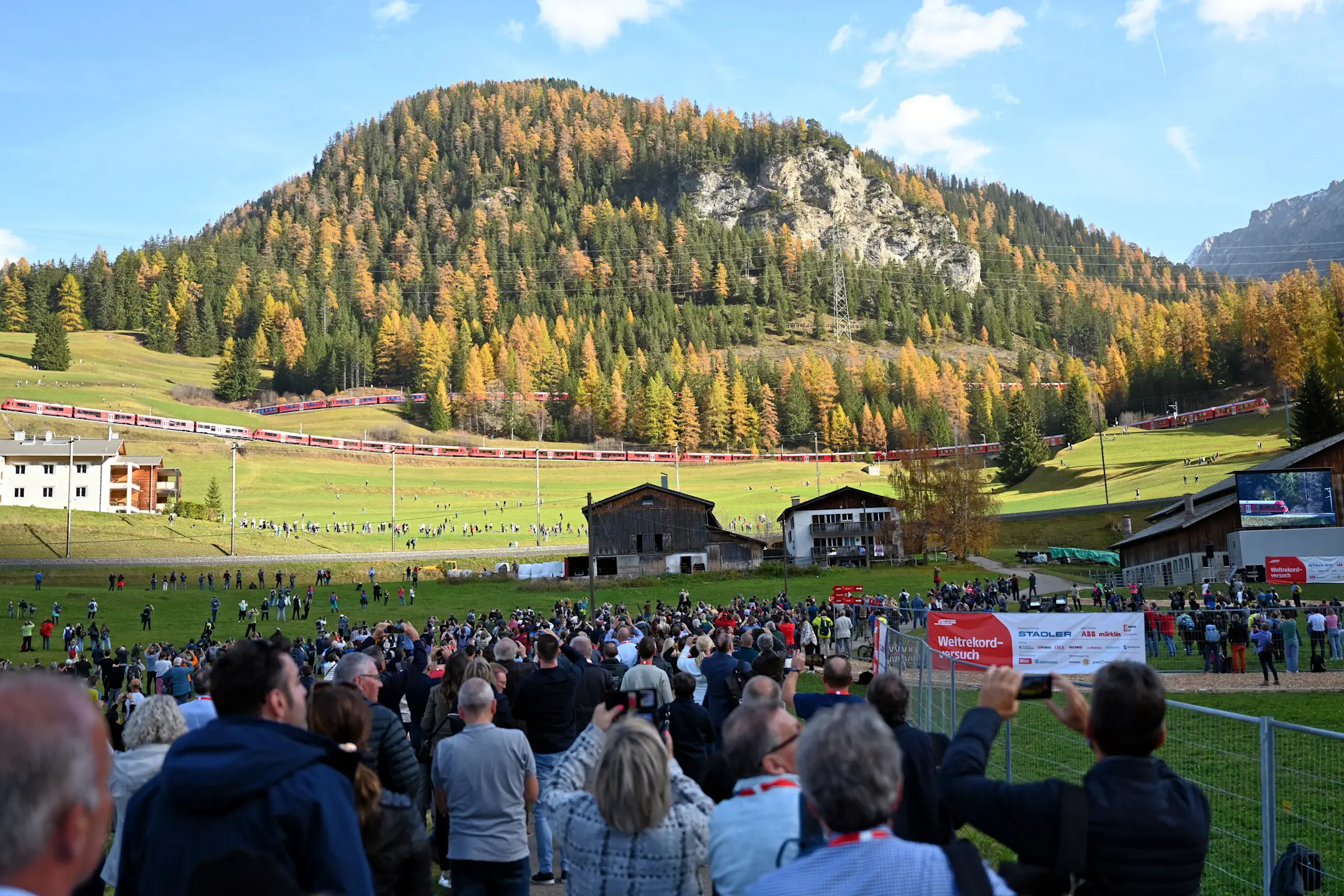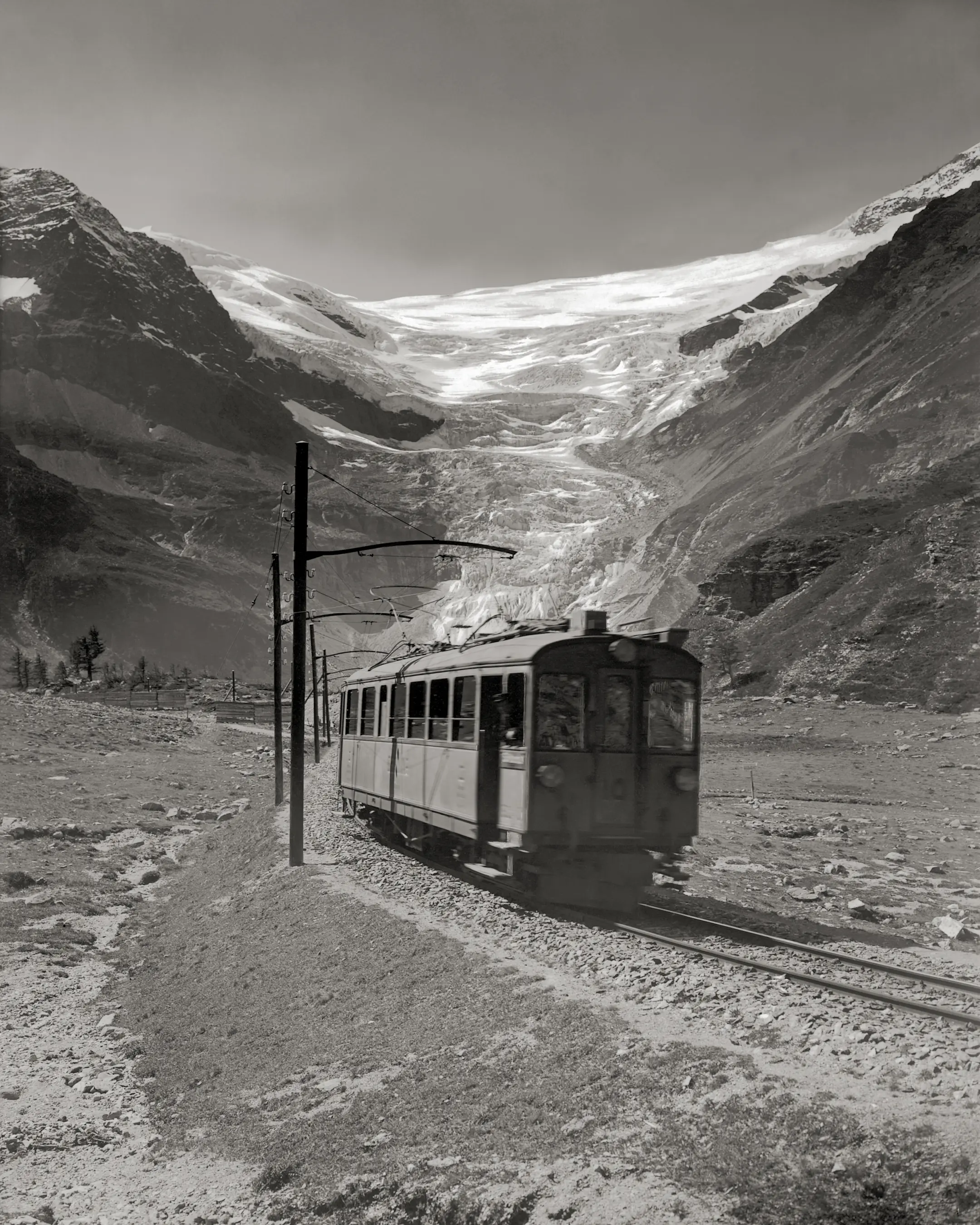
What began with a courageous vision became a lifeline of the Swiss canton of Graubünden: Rhaetian Railway has been transporting people and goods through one of Europe’s most impressive landscapes since 1889. RhB’s history is a testament to pioneering spirit, technical innovation and a close connection with nature.
Back in 1888, the Dutchman Willem-Jan Holsboer dreamed of a railway line linking the spa town of Davos with the valley. The dream quickly picked up speed: the company Schmalspurbahn Landquart-Davos AG was founded. Just one year later, the first steam train travelled from Landquart to Klosters, then, a little later, on further to Davos.
With every new tunnel, bridge and bend, the network grew: tracks were laid to St. Moritz, Disentis and Scuol-Tarasp. At the same time, other railway projects were tackled: the Arosa Line took care of the journey from Chur to Arosa, while the Bernina Line travelled the spectacular route over the Bernina Pass. Both railways were later integrated into RhB through mergers.
Just 25 years after the ground-breaking ceremony, almost the entire current network in the Graubünden Alps was completed. The Vereina Tunnel, opened in 1999, marked the latest milestone in RhB’s history on the way to the 385-kilometre network.
To this day, RhB travels on narrow-gauge tracks, yet with a broad vision. With the UNESCO World Heritage Site, the Bernina Express, the Glacier Express and many other offers, we are continuing our history: as part of the region, as a bridge between cultures and as an invitation to discover the Swiss canton of Graubünden in a fascinating new way.
How the journey began
The beginnings of RhB
Back in Roman times, the Graubünden passes were already used as military roads and trade routes. The Alpine passes served as important mule tracks. They were expanded at the beginning of the 19th century. The most important axes of Graubünden’s road network were created under the direction of engineer Richard La Nicca. However, La Nicca’s passion was the emerging railway technology. Together with civil engineer Simeon Bavier, he suggested the construction of an Eastern Alpine railway. This was intended to connect the north with the south and lead over the Lukmanier, Greina or Splügen pass. However, the proposed transit route was only one of many and was never built. It was Simeon Bavier himself who brought the Graubünden Alpine railway projects to an end. As Federal President of Switzerland, he opened the Gotthard Line in 1882. A transit connection through Graubünden was thus off the table. From then on, the focus was on railway projects within the canton, but they all failed due to political disputes or financial bottlenecks. It was only with the Dutchman Willem Jan Holsboer that the tide turned.
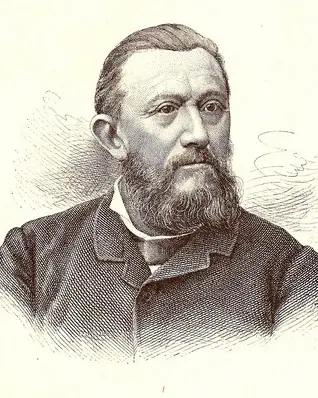
Landquart-Davos narrow-gauge railway
Holsboer moved to the spa town of Davos because of his sick wife, and remained there even after her death. It was clear to him early on that only the railway could help the spa town achieve success. After the project for a standard-gauge railway from Landquart to Davos was shelved due to excessive costs, he went public with a new project: a narrow-gauge railway with construction costs of around five million Swiss francs was to open up Davos to the world. Three Basel financiers were prepared to finance the railway if the municipalities of Prättigau and Davos provided the services they required. These included the provision of sand, gravel, stones and wood for railway construction as well as subsidies from the municipalities of Klosters and Davos.
In September 1886, all the municipalities clearly agreed to meet the demands. The path for the railways was clear. The Schmalspurbahn Landquart–Davos AG was founded in February 1888. Construction of the Landquart–Davos line began in the same year. A pure adhesion section (i.e. without cogwheels) with an incline of 4.5% was created. At times, around 3,300 workers were on duty, including many Italians but also locals from the valley communities. September 1889 saw the opening of the first section from Landquart to Klosters, followed by the opening of the entire track to Davos a year later.
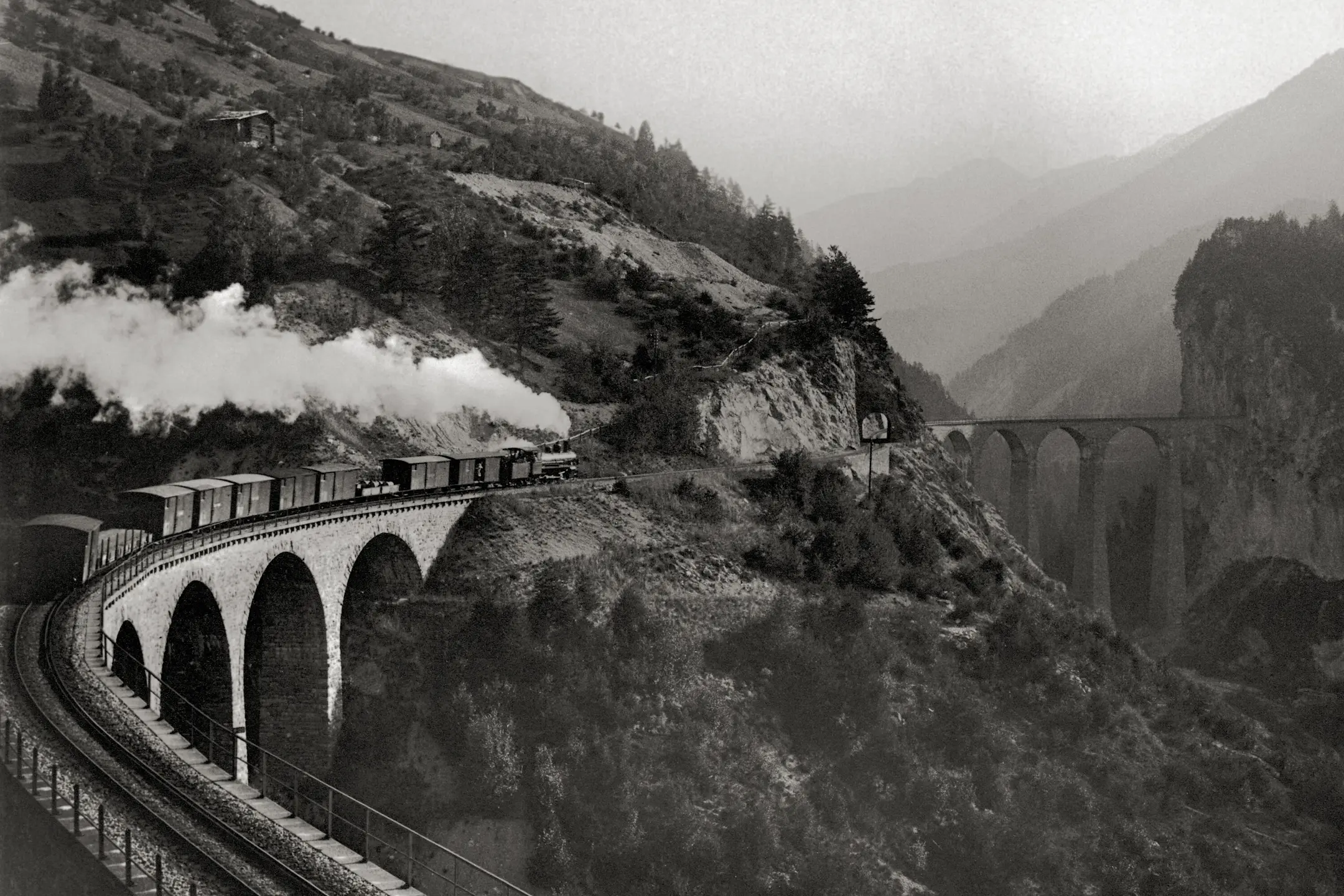
Albula instead of Scaletta
While the first track was being built, Holsboer planned a continuation from Davos to the Engadin via Scaletta. He had received a concession to build the Scaletta Railway back in 1889.
The reaction from Chur followed immediately. Neither the canton nor the town of Chur wanted the north-south connection to bypass the capital and the canton’s most populous region. The various committees that had been planning a rail connection from Chur to Thusis for some time also joined forces. A heated electoral battle broke out between the centre and the periphery. In November 1889, the struggle came to an end. Around 70 per cent of the electorate from Graubünden voted in favour of accessing the Engadin via Albula and thus against the Scaletta Railway.
Canton takes the lead
Holsboer respected the decision and pushed ahead with the creation of a uniform Graubünden narrow-gauge network. The renaming of the Landquart–Davos narrow-gauge railway to Rhaetian Railway on 12 February 1895 was the logical consequence of the line expansion. In 1897, in a new railway law, the canton defined two priority lines, in the construction of which it participated financially (Thusis–Samedan, Reichenau–Ilanz) and two complementary lines, which were to complete the network at a later date (Ilanz–Disentis, Samedan–Scuol). At the same time, the canton acquired all RhB shares. From then on, the railway belonged to the canton of Graubünden.
Complete timeline
Year
Event
1889
The Landquart-Davos Smalspurbahn (LD Narrow-Gauge Railway Company) opens the Landquart – Klosters line
1890
Klosters – Davos line opens
1895
LD changes its name to «Rhaetian Railway»
1896
Landquart – Thusis line opens
1903
Reichenau – Ilanz line opens
1904
Thusis – St. Moritz line opens
1907
Bellinzona – Mesocco line opens
1908
Samedan – Pontresina line opens
1909
Davos – Filisur line opens
1910
Inaugurazione della tratta St. Moritz – Tirano (Ferrovia del Bernina)
1912
The first electric engine is procured; Ilanz - Disentis/Mustér line opens
1913
Bever – Scuol-Tarasp line opens
1914
Chur – Arosa line opens (Chur-Arosa Bahn Railway Company)
1922
Electrification of the RhB is completed
1930
Inaugural run of the Glacier Express from St. Moritz to Zermatt
1942
RhB merges with the Chur-Arosa Bahn Railway Company; RhB merges with the Bellinzona-Mesocco Bahn Railway Company
1943
RhB merges with the Berninabahn Railway Company
1973
Inauguration of the Bernina Express
1979
Twinning agreement with Hakone Tozan Railway (Japan)
1982
Furka Base Tunnel opens (year-round Glacier Express service)
1989
RhB celebrates its centenary. To mark the occasion, the RhB adopts a new corporate image and repaints its trains in a new red livery
1997
The electrified Chur – Arosa line is converted from 2,400V DC to 11,000V AC
1999
Klosters – Lavin/Susch line opens (Vereina Tunnel with car transporter) - the first extension to the network since 1914
2003
Bellinzona – Mesocco line closes
2008
The Albula and Bernina Lines are added to the UNESCO World Heritage List
